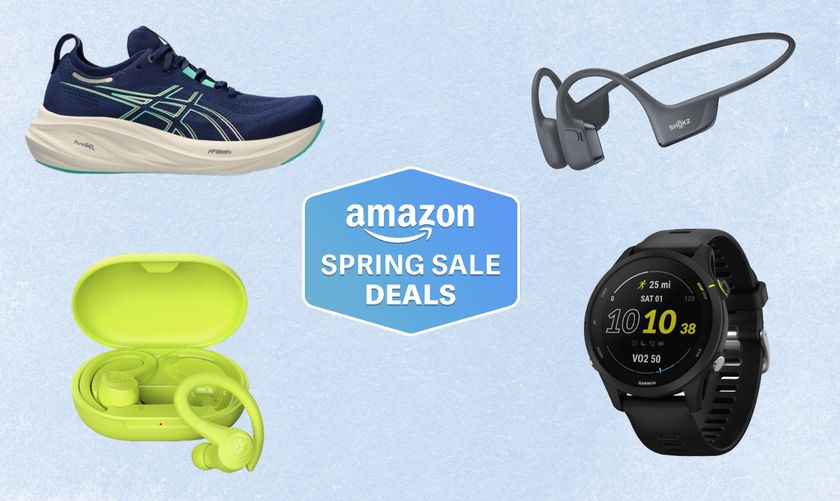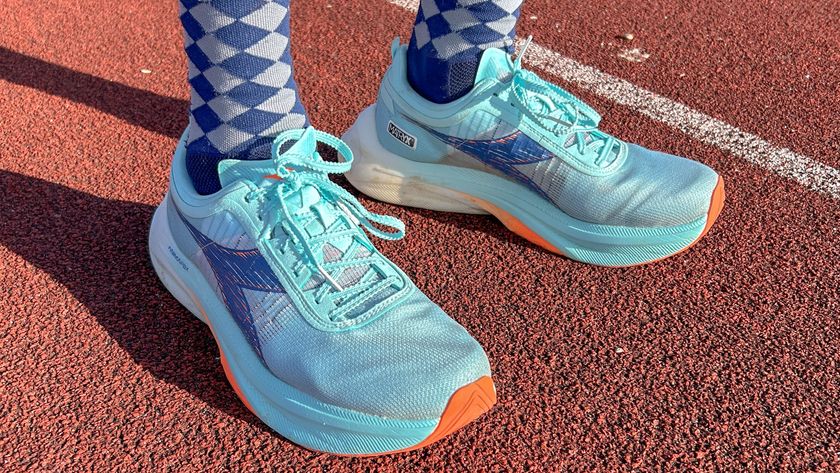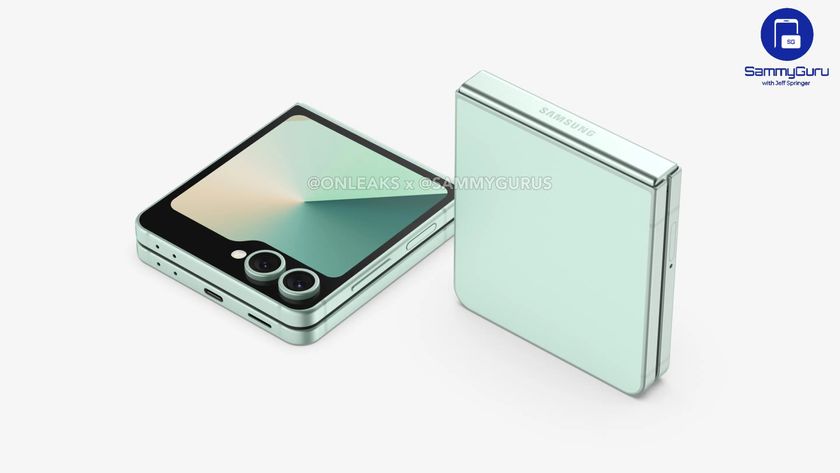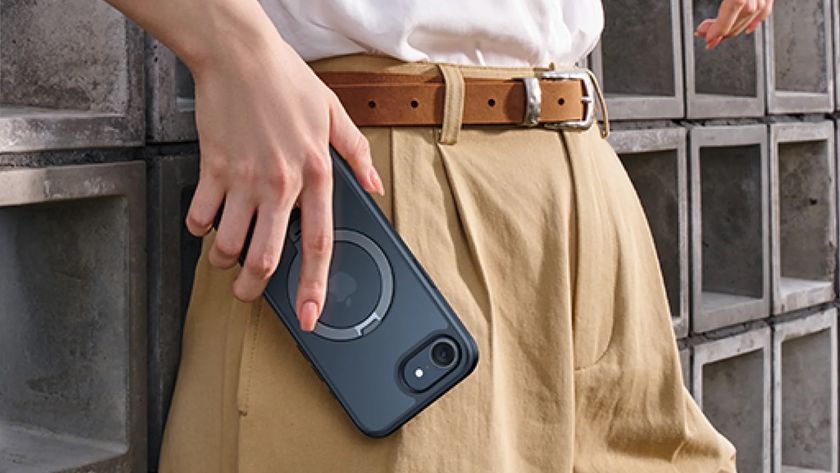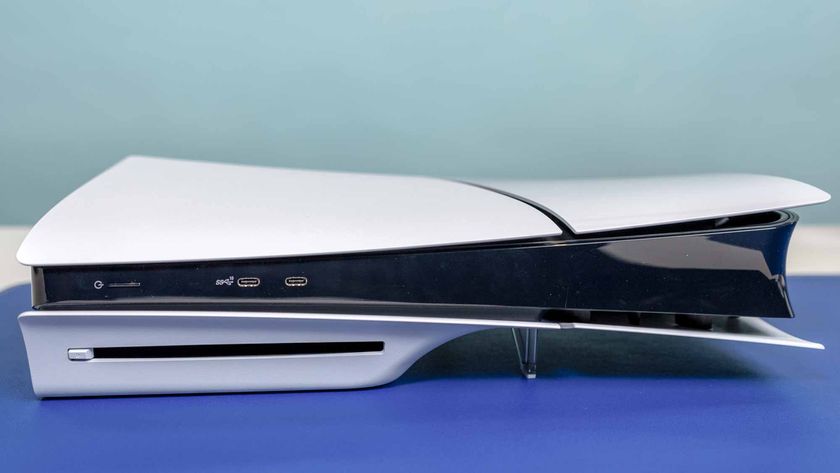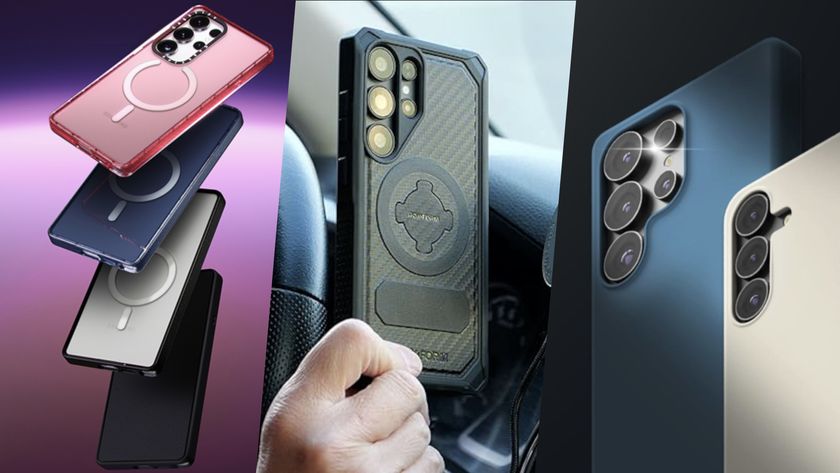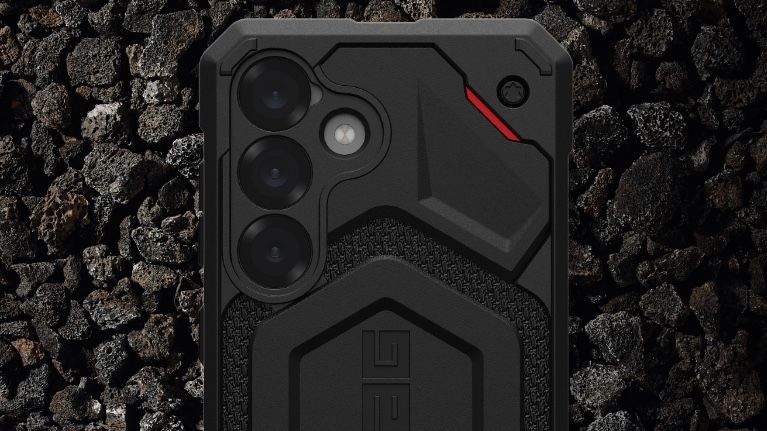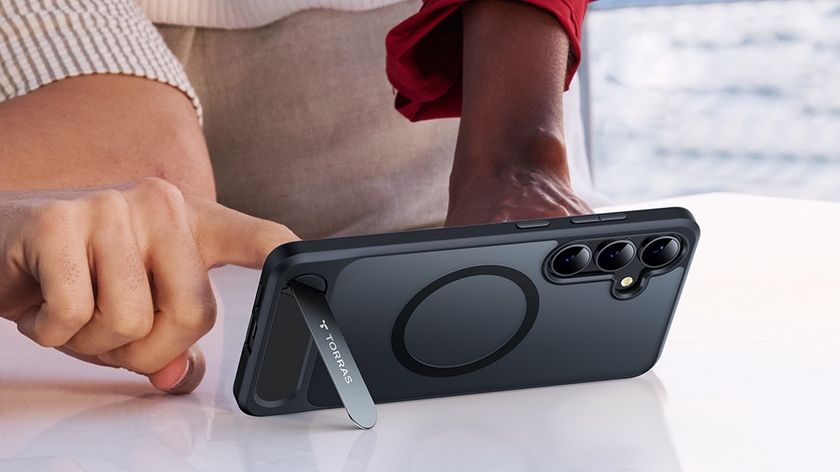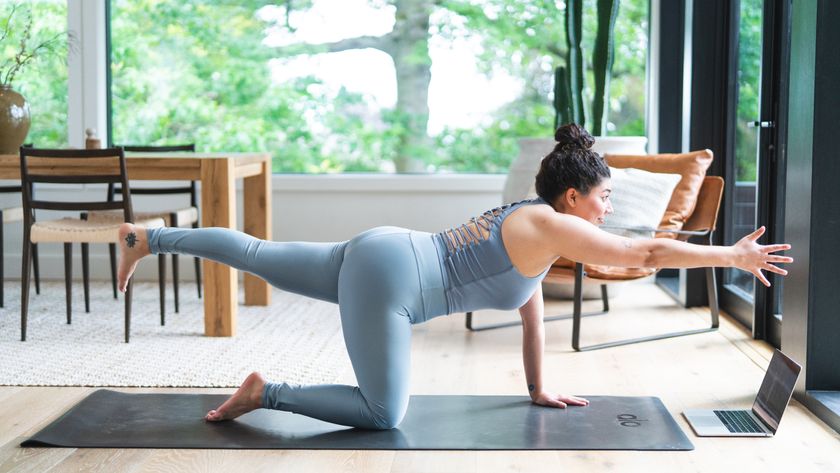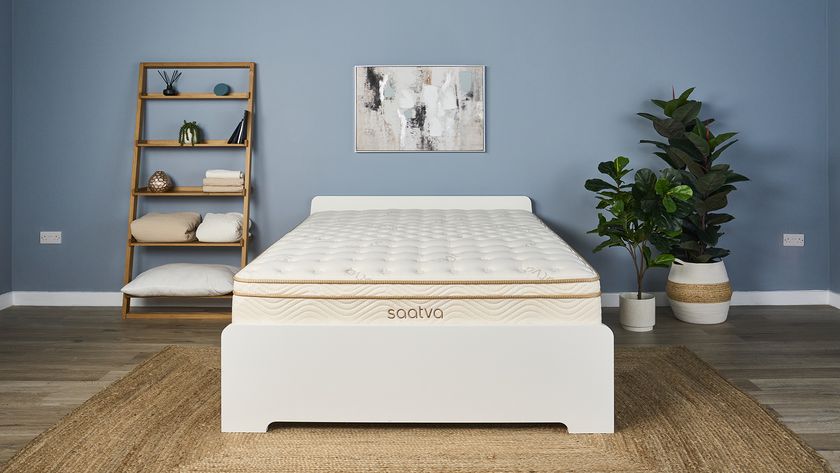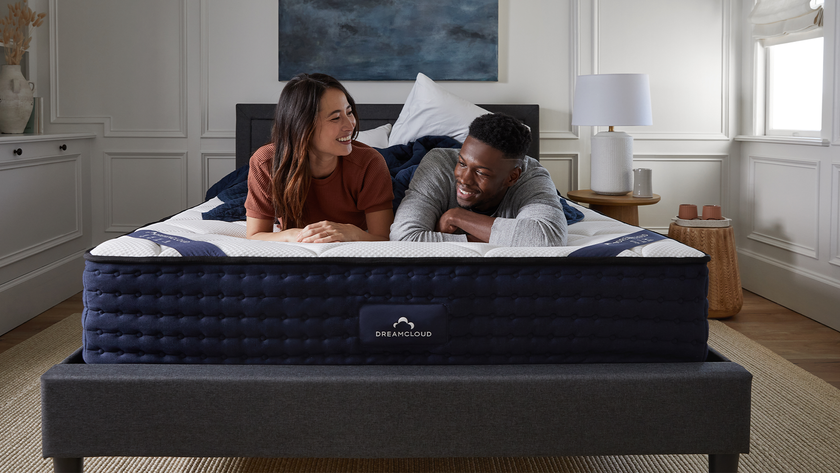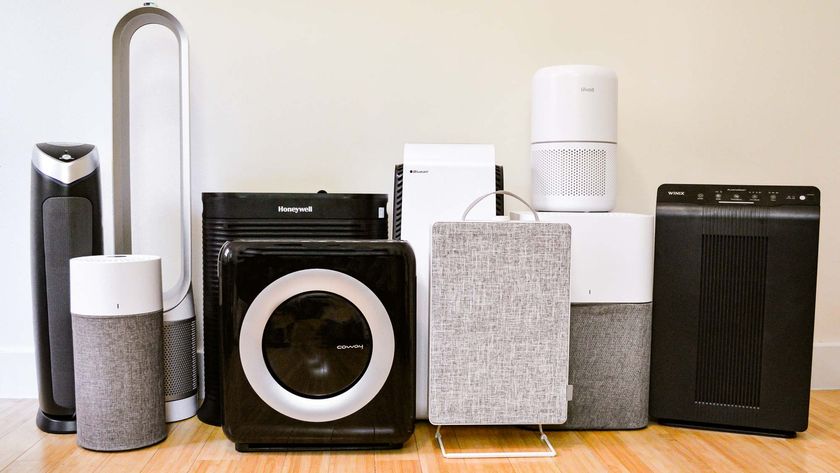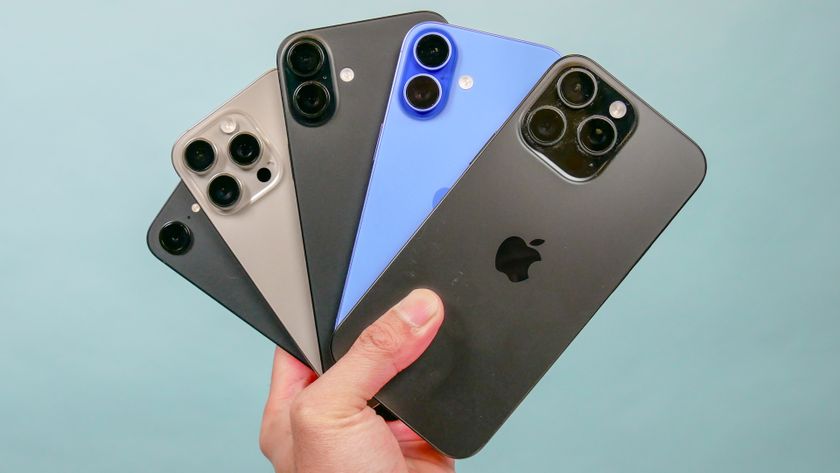The best men’s running shoes in 2025
These shoes are comfortable, durable, and can help you get the most from your next run.
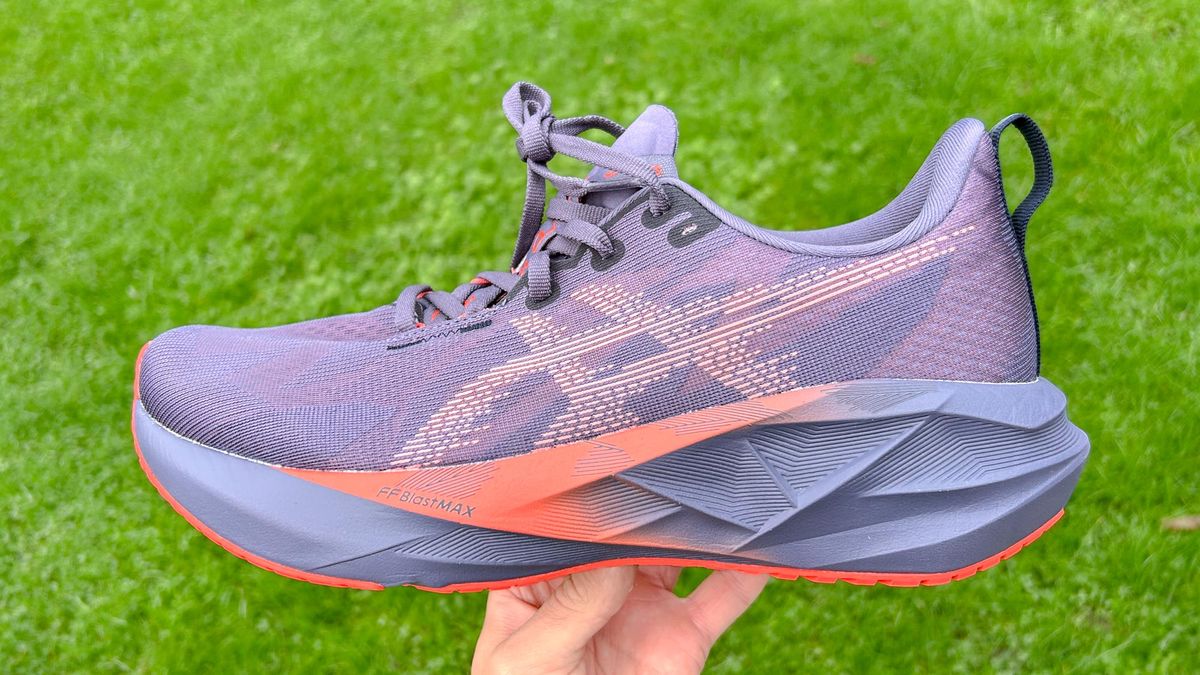
To help you find the best men's running shoes for you, we’ve tested hundreds of pairs in recent years, putting each through their paces with a variety of training runs to see how they handle different speeds and terrains.
We’ve also looked at the fit and comfort of each shoe, as well as considering the level of performance and value they offer in comparison to other shoes, and then picked out the very best option in a variety of categories.
If you’re after a versatile shoe that can handle almost anything you throw at it, we think that the Asics Novablast 5 is the perfect choice. It’s comfortable, durable, and suitable for a variety of runs, but it’s not your only option as we’ve rounded up the best men’s running shoes you can buy right now.
Quick list

The Novablast 5 is a great option for runners of all levels, offering a balance of comfort and versatility at a reasonable price. It’ll sit well within a running shoe rotation, or cover off all your needs if you just use one shoe.

The Clifton 9 is a comfortable shoe with a rocker that makes running feel that little bit more effortless — exactly what you want when you start with the spot. It’s well-cushioned and protects the body well, and works well for all kinds of runs.

The Velocity Nitro 3 is a versatile shoe that comes in cheaper than most, and one that often pops up in sales as well. It’s comfortable enough to feel good throughout easy and long runs, but also has some bounce when you want to up the pace.
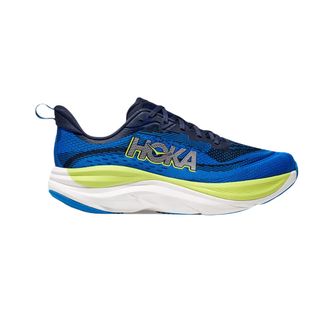
The Hoka Skyflow is a comfortable cushioned running shoe with a midsole made from a lightweight supercritical EVA foam. It's a protective shoe that's also quite versatile, and a good option for runners of all levels.
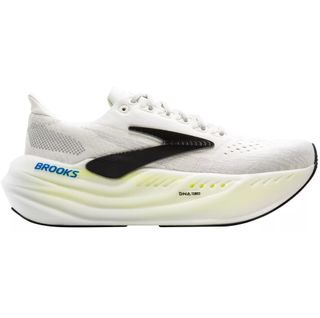
The mega-stack Glycerin Max offers all the comfort and protection you need for the hundreds of miles you’ll be covering in marathon training, and the rockered ride helps those miles to tick by more smoothly and speedily.
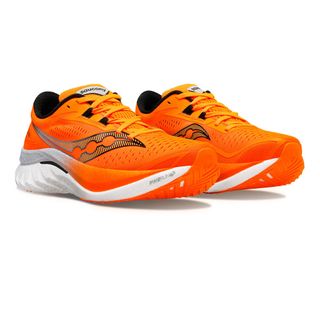
The Endorphin Speed 4 is the ultimate do-it-all shoe, offering enough comfort for slow, easy runs but also enough speed for fast training sessions and even races. If you don’t want to invest in multiple shoes to suit different runs, the Speed 4 is the perfect all-rounder.
View more products below...

For race day you want a carbon plate running shoe, and our top pick of those is the Asics Metaspeed Sky Paris, which is incredibly light but still very springy. It's ideal for road races of any distance,
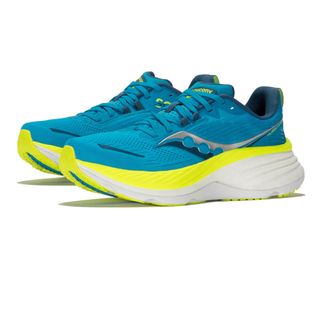
As well as having a stable design, the Saucony Hurricane 24 is one of the most comfortable running shoes available, and undoubtedly a great cushioned shoe for runners with flat feet.
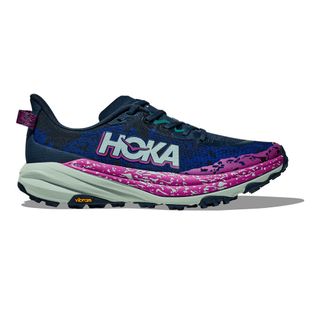
The Hoka Speedgoat 6 is a versatile trail shoe that grips well on pretty much any terrain, from muddy forest tracks to rocky mountain trails. It’s also comfortable over long distances, while also being light enough for faster off-road efforts.
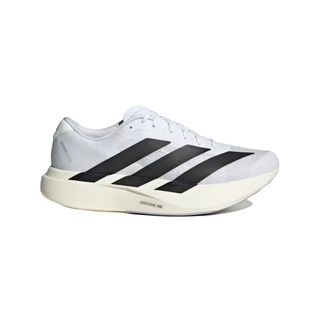
The lightweight Adidas Evo SL is a shoe that can do it all, whether it’s fast reps at the the track or long, easy runs on the road. It’s impressively bouncy and fun to run in, and also great value given the high level of performance.
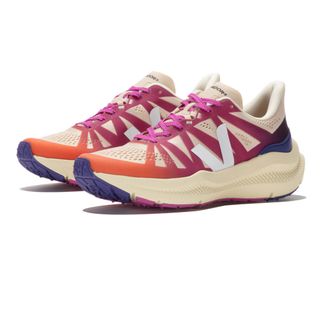
The Veja Condor 3 is made from a mix of sustainable and recycled materials to make it a more eco-friendly pick than most running shoes. It delivers a comfortable ride on the run as well, and is a marked improvement on other sustainable shoes we’ve tested.
Best men's running shoes overall
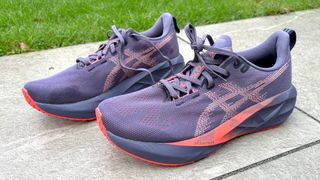
Specifications
Reasons to buy
Reasons to avoid
The Asics Novablast 5 is a jack-of-all-trades running shoe, offering a sizeable stack of comfortable cushioning in a surprisingly lightweight design. It offers all the protection you need to cruise through easy and long runs, while having enough pep for faster efforts as well, even if it’s not as fast as a dedicated speed shoe.
It’s a great option for beginners and any runner who wants one shoe to do all their training in, but will also serve experienced runners with a shoe rotation well as a daily trainer that can handle most of your weekly mileage, which is how I used it during my testing.
The FF Blast Max midsole foam is soft without being so squishy as to sap your energy, and the rockered profile of the Novablast 5 helps to roll you from heel-to-toe smoothly. The angular design and array of wild colors available will also appeal to many runners, and the Novablast line has always held up well for me when it comes to durability.
- Read our full Asics Novablast 5 review
Best men’s running shoes for beginners

Specifications
Reasons to buy
Reasons to avoid
If you're new to running then it's best to start with a comfortable and versatile shoe that will protect your body as you get used to the sport, while being suitable for runs of any length and speed. A shoe like the Hoka Clifton 9, which is one of the most popular on the market and great for beginners because of the comfort and support it offers.
Like many Hoka shoes, the Clifton 9 has a rockered design which creates a smooth ride that rolls you onto your toes. It doesn't make running feel effortless - no shoe can do that unfortunately - but it helps it feel like less effort.
This smooth ride helps disguise the fact the midsole foam on the shoe is a little dull compared to the bounciest materials available elsewhere. However, it does a good job of muting the impact of running, which is valuable when you first start out in the sport.
There is no 'right' level of drop for a beginner running shoe, but the 5mm drop on the Clifton 9 is a little lower than average, so if you can it might be worth trying it out alongside a 10mm drop shoe like the Nike Pegasus 40 or Puma Velocity Nitro 3 to see which you prefer before buying.
- Read our full Hoka Clifton 9 review
Best value men’s running shoes
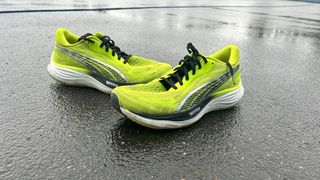
Specifications
Reasons to buy
Reasons to avoid
The Puma Velocity Nitro 3 is a relatively new addition to the market, especially compared to shoes like the Pegasus which has been around for four decades, but it has quickly established itself as an excellent trainer that undercuts most of the competition on price. Not only is it great value at its listed price, the Velocity Nitro 3 is often found in sales, and if you're really seeking a bargain the Puma Velocity Nitro 2 is very similar and ripe for discounts now the newer shoe is out.
Importantly, the Velocity Nitro 3 is not just a good shoe for its price, it easily matches or outdoes the performance of far more expensive shoes, and it’s been a regular in our running shoe rotation despite having access to dozens of other shoes.
The Velocity Nitro 3 has a dual-density midsole with a bouncier top layer of Puma’s Nitro foam, and a firmer layer of EVA foam beneath, which helps to increase the stability of the shoe. The ride is comfortable at any pace, and for a well-cushioned shoe the Velocity Nitro 3 is versatile.
An outstanding feature of Puma’s road running shoes in general is the grip provided by their outsoles, and this is certainly the case with the Velocity NItro 3, which delivers traction on wet and even icy pavements, and can handle runs on light trails as well as the road.
- Read our full Puma Velocity Nitro 3 review
Best cushioned men’s running shoes
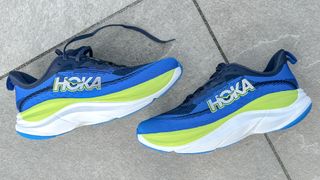
Specifications
Reasons to buy
Reasons to avoid
The Hoka Skyflow is a new cushioned shoe for 2024 that sits above the Clifton as the premium neutral daily trainer in the brands range. It has a generous stack of cushioning in the midsole to ensure a comfortable ride, but the supercritical EVA foam used is lightweight and quite responsive, meaning the Skyflow is pretty versatile shoe as well.
I am a big fan of both the Hoka Clifton 9 and the Mach 6, and for me the Skyflow merges some of the best aspects of those shoes into one, being more comfortable than the Mach and then more responsive and speedy than the Clifton.
It isn't the softest shoe on the market though, and if you are looking for a cushioned shoe that simply offers the last word in comfort for easy runs, then the Saucony Hurricane 24 or New Balance 1080v14 might be better picks. The Skyflow does have a bit more pop to it than those shoes, however, which will be welcomed by runners picking out a cushioned shoe to do a variety of training runs in.
- Read our full Hoka Skyflow review
Best men’s running shoes for marathon training
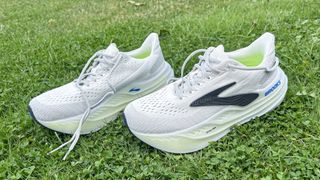
Specifications
Reasons to buy
Reasons to avoid
The Brooks Glycerin Max is the most cushioned shoe Brooks has ever made, which is really saying something given that Brooks is a brand rightly renowned for the comfort of its shoes. The Glycerin Max stands a towering 45mm high at the heel and 39mm at the forefoot, and this ensures you have all the protection you need for months of marathon training.
I also found that despite the max-stack, the Glycerin Max doesn’t feel all that heavy on the foot, with the rocker design aiding in moving you swiftly from heel to toe. While it’s not a shoe I’d have as my first choice for speedwork, it can handle tempo runs and doesn’t start to feel too big even on long runs — I did a tough 20 mile effort in it during my own marathon training to make sure of that.
The Glycerin Max differs from the standard Brooks Glycerin 22 in having a higher stack height and also a lower drop with more of a rocker than the Glycerin 22. They both used Brooks’ nitrogen-infused DNA Tuned foam, which is light and uses two different densities of foam to create a soft landing and a more responsive toe-off.
I prefer the rockered ride of the Glycerin Max, but the Glycerin 22 is also a great option for marathon training if you prefer a higher drop and more traditional ride.
- Read our full Brooks Glycerin Max review
Best men’s running shoes for versatility
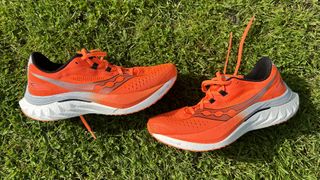
Specifications
Reasons to buy
Reasons to avoid
Once you start running regularly it’s common to have a running shoe rotation with a couple of different shoes that excel at different kinds of run, like a very cushioned shoe for easy, slow runs and a lighter, bouncier shoe for fast runs. The Endorphin Speed 4, however, is the kind of shoe that can make a rotation feel redundant, because it’s great for any type of run.
The shoe has a high stack of Saucony’s bouncy PWRRUN PB foam with a nylon plate running through the midsole. Using a nylon plate rather than a carbon one makes the shoe less stiff and more comfortable for easy runs, but it still delivers most of the propulsive benefits you expect from a plated shoe when doing fast training sessions or racing.
We’ve used the Endorphin Speed 4 for recovery runs done at very relaxed paces as well as interval sessions on the track and long tempo runs, and it always works well. It’s not as stable or comfortable as a cushioned shoe, or as flat-out fast as a carbon plate racer, but the Endorphin Speed 4 isn’t far off on either count.
It’s a shoe that can be called a ‘super-trainer’, a training shoe that uses some of the tech found in super-shoes, like the plate. If you’re seeking a similarly versatile shoe that doesn’t use a plate then the New Balance Rebel v4 is a fantastic option, and a lot cheaper too.
- Read our full Saucony Endorphin Speed 4 review
Best men's race running shoes
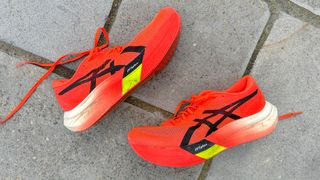
Specifications
Reasons to buy
Reasons to avoid
Racing shoes used to be lightweight, minimal affairs but the arrival of the Nike Vaporfly 4% in 2017 changed that, and when race day comes around you now want one of the best carbon plate running shoes on your feet. Our top pick of those is the Asics Metaspeed Sky Paris, which is a perfect modern racing shoe, being both very light and very springy.
The fast ride is produced by the combination of a high stack of Asics's bouncy FF Turbo+ midsole foam and a full-length carbon plate, which creates a propulsive feeling and helps you to run more efficiently. A lightweight upper and minimal outsole helps to keep the weight down, and the Metaspeed Sky Paris comes in lighter than most carbon shoes available, including the Nike Vaporfly 3.
It's a terrific racing shoe for any distance — we’ve run 5Ks, a half marathon and set a marathon PR in the shoe — with the cushioning in the midsole helping to protect the legs over the course of longer races without adding any weight that would be unwelcome in shorter events.
As with all carbon plate shoes, one downside of the Metaspeed Sky Paris is its high cost, and the outsole doesn’t have much rubber on it, so it won’t be the most durable shoe. Reserve it for your races and a few key training sessions to get the best out of the shoe, and it will serve you very well when chasing PRs.
- Read our Asics Metaspeed Sky Paris review
Best men’s running shoes for flat feet
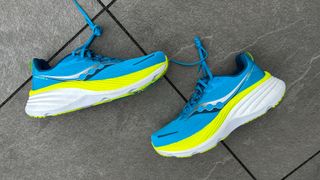
Specifications
Reasons to buy
Reasons to avoid
The Saucony Hurricane 24 is the perfect shoe for anyone looking for a comfortable and stable ride, and it's ideal for runners with flat feet because of the extra arch support it offers. Whether you’re a new runner who wants protection from the impact of the sport, or an experienced one who wants a cushioned shoe to rack up a lot of easy miles in, the Hurricane 24 is worth considering.
Although it is a stability shoe, I found that it’s one that work wells for neutral runners as well as those with flat feet, because the stability elements are subtle. The Hurricane 24 has a wide base and sidewalls of foam, and uses a firmer foam as a frame around the bouncy PWRRUN PB mainly used in the midsole.
As a result the ride is both stable and lively, and the smooth rocker on the shoe helps you to glide through the miles. I loved using it for relaxed long runs in particular, and if you’re training for a marathon and have a lot of easy-paced miles to cover, it’s ideal for carrying you through those miles.
It’s not the most versatile shoe though, because it’s a heavy one that’s focused on comfort above all, so if you want one shoe to tackle everything from easy runs to interval sessions it wouldn’t be my top pick — the Saucony Tempus would be a more versatile option for runners with flat feet.
- Read our full Saucony Hurricane 24 review
Best men’s trail-running shoes
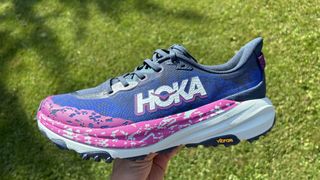
9. Hoka Speedgoat 6
Specifications
Reasons to buy
Reasons to avoid
The best trail-running shoes for you will often depend on the terrain you’re going to tackle, because the outsoles on trail shoes are designed to grip on different surfaces, be it deep mud or hard rocks. However, the Hoka Speedgoat 6 is the trail shoe I recommend to people most often, because it’s exceptionally versatile, both in the terrain it works for and the kind of runs you can do in it.
That starts with the 5mm lugs on the Vibram outsole, which provide reliable grip on a wide range of surfaces. I’ve used the shoe on sun-bleached rocky trails and muddy forest tracks, as well as running on the road in it at times, and it always delivers reliable traction.
The versatility of the shoe is also a result of its midsole, which is comfortable and stable, but also made from a lightweight foam that is responsive enough to use for faster runs. The Speedgoat 6 is a shoe you can use for ultramarathons and short, fast trail races, and everything in between, even if it’s not quite as speedy as a carbon plate trail racer like the Hoka Tecton X3.
Having used both shoes extensively I will say that the Speedgoat 6 is quite similar to the Speedgoat 5, however, so if you see an excellent deal on the older shoe that would offer better value. There are some small upgrades to the Speedgoat 6 including a lighter midsole foam, but both the 5 and 6 are excellent options for trail runs.
Best men's daily trainer
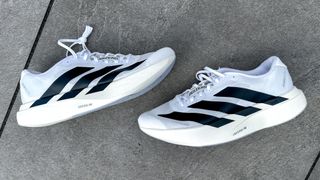
Specifications
Reasons to buy
Reasons to avoid
The Adidas Adizero Evo SL is one of the most versatile shoes I’ve tested without a plate in the midsole, and one of my favorite new shoes in a long time. It’s exceptionally light despite having a fairly high stack of foam, and that foam is Adidas’s impressively bouncy Lightstrike Pro material.
Throw in a lightweight but comfortable mesh upper and enough rubber on the outsole to deliver reliable grip, and the Evo SL is the complete package for anyone looking for a fun and versatile shoe to handle a variety of runs. It’s pretty good value as well, and even looks good when you’re not running.
If you want a more speed-focused daily trainer then a shoe with a plate like the Saucony Endorphin Speed 4 might work better, but by not having a plate the Adidas Evo SL is more flexible and comfortable on easy runs, and I found it was still a great option for speedwork too, partly thanks to the sharp forefoot rocker which is similar to the design of the Adidas Pro Evo 1 racing shoe.
- Read our Adidas Adizero Evo SL
Best men's sustainable running shoes
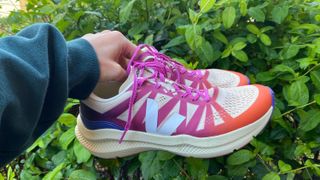
Specifications
Reasons to buy
Reasons to avoid
Running shoes are generally not the most sustainable product, with most of the materials used in making them ending up in landfill once a runner is done with them. To combat this, more and more shoes are being made with sustainable and recycled materials, which sometimes comes at the cost of reduced performance. Of these shoes, the Veja Condor 3 stands out as a comfortable and enjoyable running shoe that’s made from sustainable materials.
The comfort comes from the midsole, which is made from a mix of materials including sugar cane-based EVA and Amazonian rubber. Other materials used in the shoe include natural latex and recycled polyester, and the Veja Condor 3 is built to be durable, which is the best way of all to make your running shoe more eco-friendly.
It’s not the lightest shoe or the best option for speedwork, but we found it comfortable and enjoyable to use for long runs during marathon training. The less sustainable shoes on this list offer a higher level of performance, often for a lower price since the Condor 3 is expensive at $200, but if you value sustainability highly with your running shoes then the Condor 3 is the outstanding option.
- Read our Veja Condor 3 review
How to choose the best men's running shoes
When you’re looking for the best men’s running shoe, there are a few things to consider. First, how do you run? It’s always a good idea to head to your local running store to have your gait checked before investing in a pair of running shoes to ensure you’re not overpronating, as you might need a support shoe or insole. Not sure what this means? Check our guide on how to buy running shoes.
Next, you’ll need to think about the kind of miles you plan on running. If you’re looking for a fast shoe for your next road marathon, you’ll probably want to look at something lightweight, which has a responsive foam to propel you to your next PR. That said, if you’re a complete beginner, you’ll probably want to look at a more stable shoe that’ll keep you comfortable as you run and walk.
Finally, have a think about the surfaces you plan on running on. If you’re a trail runner at heart, you’ll need a shoe with a good amount of grip on the outsole to keep you from slipping on uneven terrains. On the other hand, if you do most of your miles on hard concrete, you’ll want a little more cushioning to keep you comfortable.
How we test the best men's running shoes
We test the best running shoes on the market by running in them. We've run at least 50 miles in each of these shoes, on a number of different terrains, and in different weather conditions.
When testing running shoes, we’re looking for a number of different factors to help us make up our minds. Obviously, how comfortable they are underfoot and how well they fit are primary concerns. However, we also look at how responsive they are at different paces during different sessions, and how well they perform on a wet sidewalk or a muddy path.
Other factors we consider when testing the best men's running shoes include such basics as how easy they are to lace, as well as extras like carbon-fiber plates, or ultra-lightweight midsole foams. Last, we also take the price of the shoe into consideration for our final rating, relative to other shoes in its class.
FAQs
Can I use running shoes for regular use?
While there's no reason why you can't wear your running shoes on a dog walk or in the gym, this will shorten the life of your shoe. Some running shoes, such as those with a carbon fiber plate, are designed for racing, so we wouldn't recommend heading out for a walk in those.
How long do running shoes last?
The answer here depends on the type of running shoe you bought, and what you're using the running shoe for. For example, a carbon fiber running shoe won't last anywhere near as long as a cushioned running shoe, which is designed to be more durable.
At the same time, going out every single day, or doing a lot of trail running means you're likely to wear through your shoes quicker than someone doing a couple of runs a week. You'll also wear your shoes out faster if you wear them to the office, walking the dog, or in the gym.
As a ball-park figure, experts reckon shoes should last between 300-500 miles. If the midsole doesn't feel as cushioned as it once did, or there's visible wearing to the sole or upper, it's time to upgrade your shoes.
Sign up to get the BEST of Tom's Guide direct to your inbox.
Get instant access to breaking news, the hottest reviews, great deals and helpful tips.

Nick Harris-Fry is an experienced health and fitness journalist, writing professionally since 2012. He spent nine years working on the Coach magazine and website before moving to the fitness team at Tom’s Guide in 2024. Nick is a keen runner and also the founder of YouTube channel The Run Testers, which specialises in reviewing running shoes, watches, headphones and other gear.
Nick ran his first marathon in 2016 after six weeks of training for a magazine feature and subsequently became obsessed with the sport. He now has PBs of 2hr 27min for the marathon and 15min 30sec for 5K, and has run 13 marathons in total, as well as a 50-mile ultramarathon. Nick is also a qualified Run Leader in the UK.
Nick is an established expert in the health and fitness area and along with writing for many publications, including Live Science, Expert Reviews, Wareable, Coach and Get Sweat Go, he has been quoted on The Guardian and The Independent.
- Jane McGuireFitness editor
